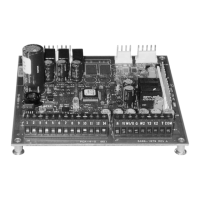152 RT-SVD03G-EN
Voyager Commercial 27½ to 50 Tons CV and VAV
Troubleshooting Tips
If the transducer output voltages do not seem right, connect a 0-5" manometer in parallel with the
transducer. This way you can see the same pressure the transducer is seeing. Many transducers
get replaced in error when the real culprit is a loose tube or clogged fitting.
The polyethylene tubing in the transducer circuit does not readily go back to its original shape after
use. Therefore, if a tube is removed from a fitting it should be cut back to a fresh end prior to
reattaching.
Measure the transducer output voltage at RTAM terminal J1-3 to chassis ground.
When the supply fan is off, the transducer output voltage should be approximately 0.25VDC. If the
voltage output is high or low, unplug the transducer tubing to see if the voltage increases or
decreases. If it does, a tube is probably clogged.
The input voltage to the transducer is measured between RTAM J1-4 and chassis ground. It should
be 5VDC. If it is low, unplug the transducer and measure the voltage again. If OK now, the
transducer or transducer wiring is shorted to common or ground.
The outdoor air pressure sensor must be mounted as shown in Fig. 59. If the sensor is mounted
upside down the tubing can fill with water during heavy rains.
The static pressure sensing cover plate in the fan section of the unit is bolted to the fan bulkhead.
The bulkhead has a very small (0.07") hole in the center area. The purpose of using such a small
hole is to ensure that the transducer only sees the average supply air pressure. If the hole is
enlarged, the transducer could respond erratically. If the hole is plugged, the transducer will not
respond. If the gasket between the cover plate and bulkhead is leaking, the supply pressure will
appear to be abnormally low since the cover plate is in the fan section.
Application Notes
Some applications call for relocating the supply air tube to 2/3 of the way down the duct. If this is
done, be certain that there is no potential obstruction between the unit and the pickup point (such
as fire dampers). A separate high duct static switch may need to be added.
The Outside Air Pressure Sensor should be located on top of the unit as shown in Figure VC-1. Some
applications with extreme winds could require mounting the sensor in an area less affected by
wind.
BAYSENS021A Setpoint Input
This chart lists setpoint /voltage/resistance for the VAV Supply Air Cooling setpoint on the RTRM
module. The chart can be used for troubleshooting units that have a remote setpoint at this input.
The typical remote setpoint input device is a BAYSENS021 zone sensor.
The connection points are RTRM J6-2 and RTRM J6-3.
If a remote setpoint is used, clip jumper R69 on the RTAM module. If the jumper is not clipped, the
unit will ignore the RTRM setpoint.
Note: A remote setpoint can also be applied to the RTAM Supply Air Cooling Setpoint input.
However, the RTAM inputs use different temperature/ resistance inputs. See VAV Setpoint
Inputs for input values.

